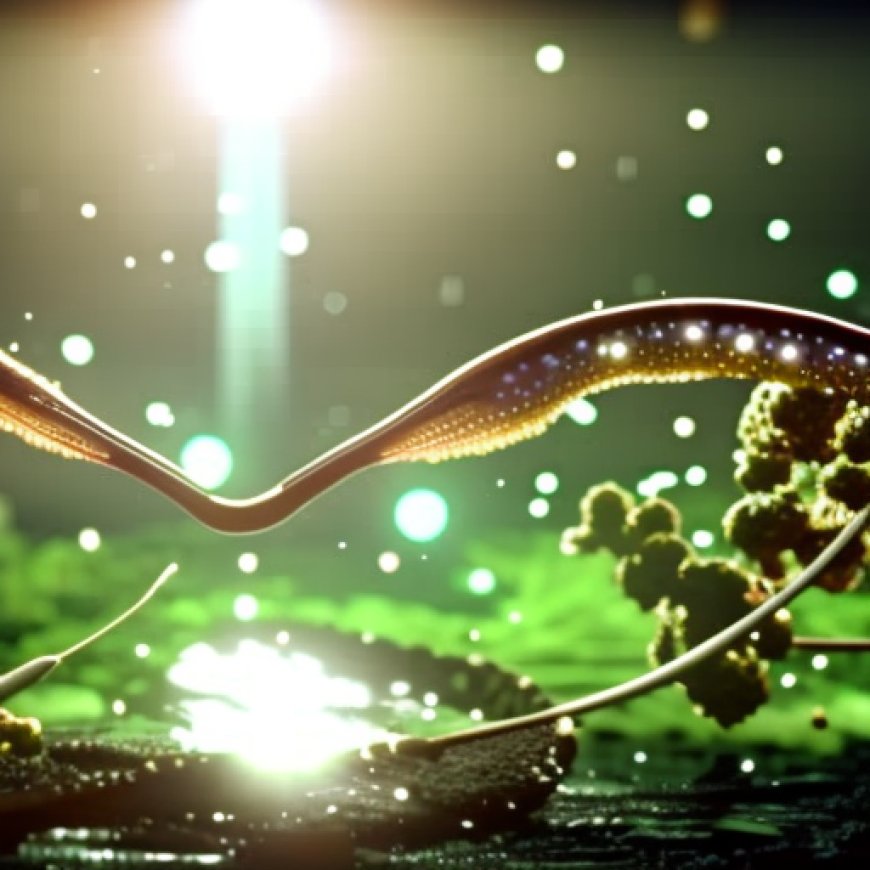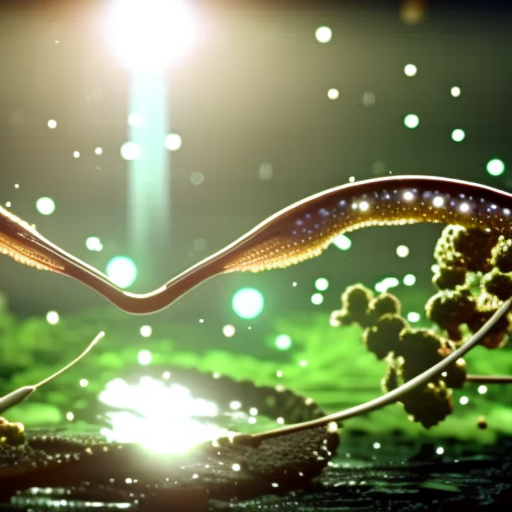Biological Wastewater Treatment: The Intersection of Biology and Technology
Biological Wastewater Treatment: The Intersection of Biology and ... EnergyPortal.eu


Exploring the Role of Microorganisms in Biological Wastewater Treatment: A Blend of Biology and Technology
Biological wastewater treatment is a fascinating intersection of biology and technology, where microscopic organisms are harnessed to perform a critical environmental service. This process involves the use of bacteria, fungi, and other microorganisms to break down pollutants in wastewater, transforming it into a form that is safe to be released back into the environment.
The Sustainable Development Goals (SDGs)
- Goal 6: Clean Water and Sanitation
- Goal 9: Industry, Innovation, and Infrastructure
- Goal 13: Climate Action
- Goal 14: Life Below Water
- Goal 15: Life on Land
The Role of Microorganisms in Wastewater Treatment
- Microorganisms are nature’s ultimate recyclers, capable of breaking down a wide range of organic materials found in wastewater.
- They consume these materials and convert them into simpler substances like water, carbon dioxide, and biomass.
- In wastewater treatment, microorganisms are used in a controlled environment to efficiently break down pollutants.
The Importance of Optimal Conditions
- Factors such as temperature, pH, and oxygen levels influence the activity of microorganisms in wastewater treatment.
- Monitoring and control systems are used to maintain optimal conditions for the microorganisms.
- These systems continuously monitor factors like temperature and pH, adjusting them as needed to ensure efficient microbial activity.
Selecting and Cultivating Microorganisms
- Different types of microorganisms are better at breaking down specific types of pollutants.
- Technology plays a crucial role in selecting and cultivating the right microorganisms for the job.
- Bioaugmentation is used to enhance pollutant-degrading capabilities by adding specific strains of microorganisms to the treatment tank.
The Synergy of Biology and Technology
The use of microorganisms in wastewater treatment demonstrates how biology and technology can collaborate to solve environmental challenges. By harnessing the power of nature with the help of technology, we can protect our environment.
Conclusion
Biological wastewater treatment is a complex process that relies on the interplay between biology and technology. It utilizes microorganisms to break down pollutants under carefully controlled conditions. This process ensures that wastewater can be safely returned to the natural water cycle, contributing to several SDGs such as clean water and sanitation, industry innovation and infrastructure, climate action, life below water, and life on land. As pollution and environmental degradation persist, the role of biological wastewater treatment becomes increasingly critical.
SDGs Addressed or Connected to the Issues Highlighted in the Article
- SDG 6: Clean Water and Sanitation
- SDG 9: Industry, Innovation, and Infrastructure
- SDG 13: Climate Action
The article discusses the process of biological wastewater treatment, which is directly related to SDG 6 – Clean Water and Sanitation. This goal aims to ensure access to clean water and sanitation for all. The article highlights how microorganisms are used to break down pollutants in wastewater, making it safe to be released back into the environment.
The article also mentions the role of technology in monitoring and controlling the conditions for microorganisms, which aligns with SDG 9 – Industry, Innovation, and Infrastructure. This goal focuses on promoting sustainable industrialization and fostering innovation.
Additionally, the article touches on the importance of biological wastewater treatment in addressing pollution and environmental degradation, which relates to SDG 13 – Climate Action. This goal aims to combat climate change and its impacts.
Specific Targets Under Those SDGs Identified Based on the Article’s Content
- SDG 6.3: By 2030, improve water quality by reducing pollution, eliminating dumping and minimizing release of hazardous chemicals and materials.
- SDG 9.4: By 2030, upgrade infrastructure and retrofit industries to make them sustainable, with increased resource-use efficiency and greater adoption of clean and environmentally sound technologies and industrial processes.
- SDG 13.3: Improve education, awareness-raising, and human and institutional capacity on climate change mitigation, adaptation, impact reduction, and early warning.
The article emphasizes the importance of using microorganisms to break down pollutants in wastewater, contributing to the improvement of water quality and reducing pollution. This aligns with SDG 6.3.
The article also highlights the role of technology in monitoring and controlling the conditions for microorganisms, which supports the target of upgrading infrastructure and adopting clean technologies mentioned in SDG 9.4.
Furthermore, the article mentions the need for education and awareness-raising on environmental challenges, including pollution and degradation. This relates to SDG 13.3, which aims to improve education and capacity-building on climate change mitigation and adaptation.
Indicators Mentioned or Implied in the Article That Can Be Used to Measure Progress Towards the Identified Targets
- Monitoring of water quality indicators, such as pollutant levels and presence of hazardous chemicals
- Monitoring of technological systems for maintaining optimal conditions for microorganisms
- Evaluation of educational programs and awareness campaigns on pollution and environmental challenges
The article mentions the use of advanced monitoring systems to maintain optimal conditions for microorganisms in wastewater treatment. Monitoring water quality indicators, such as pollutant levels and the presence of hazardous chemicals, can be used to measure progress towards SDG 6.3.
The article also highlights the role of technology in monitoring and controlling the conditions for microorganisms. Monitoring the performance and efficiency of these technological systems can be used as an indicator for progress towards SDG 9.4.
Additionally, evaluating the effectiveness of educational programs and awareness campaigns on pollution and environmental challenges can serve as an indicator for progress towards SDG 13.3.
Table: SDGs, Targets, and Indicators
| SDGs | Targets | Indicators |
|---|---|---|
| SDG 6: Clean Water and Sanitation | 6.3: By 2030, improve water quality by reducing pollution, eliminating dumping and minimizing release of hazardous chemicals and materials. | – Monitoring of water quality indicators, such as pollutant levels and presence of hazardous chemicals |
| SDG 9: Industry, Innovation, and Infrastructure | 9.4: By 2030, upgrade infrastructure and retrofit industries to make them sustainable, with increased resource-use efficiency and greater adoption of clean and environmentally sound technologies and industrial processes. | – Monitoring of technological systems for maintaining optimal conditions for microorganisms |
| SDG 13: Climate Action | 13.3: Improve education, awareness-raising, and human and institutional capacity on climate change mitigation, adaptation, impact reduction, and early warning. | – Evaluation of educational programs and awareness campaigns on pollution and environmental challenges |
Behold! This splendid article springs forth from the wellspring of knowledge, shaped by a wondrous proprietary AI technology that delved into a vast ocean of data, illuminating the path towards the Sustainable Development Goals. Remember that all rights are reserved by SDG Investors LLC, empowering us to champion progress together.
Source: energyportal.eu

Join us, as fellow seekers of change, on a transformative journey at https://sdgtalks.ai/welcome, where you can become a member and actively contribute to shaping a brighter future.







